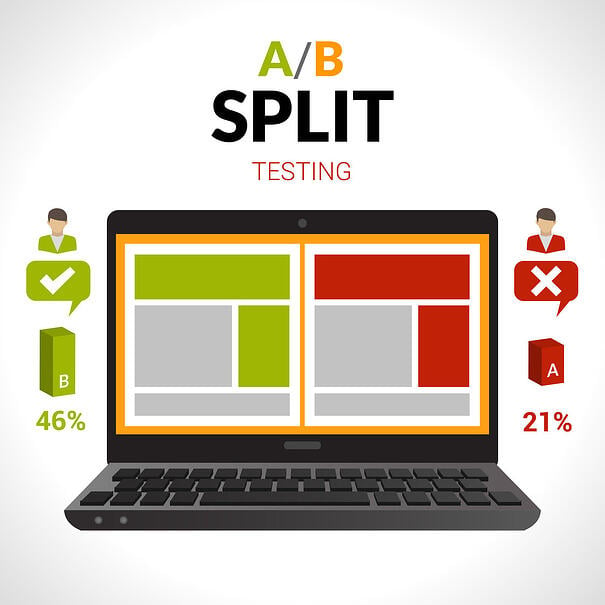Landing Page A/B Split Testing - What to Test and How to Do It

A/B split testing is inarguably the best way to determine the most effective layout, content, and features of your landing pages. Thorough and regular testing will make a significant impact on the success of your pages because the results will show very clearly which efforts are working and which are not. Effective A/B split testing will lead to the increase in conversion rates that is, of course, the goal of every business. Before you can begin testing, though, you must first identify what areas of the landing page you want to test.
Preparing for the Test
Obviously, every aspect of your landing pages merit concern, but are there parts of it that concern you more than others? Are you worried about the call to action button? The text? The colours? Decide on one or multiple focuses at a time, but it’s likely you’ll need to conduct multiple tests for separate areas of the landing page. Here are some key areas of your landing pages that should regularly be tested:
-
Headline and sub-headers: colour, wording, size, font
-
CTA: location, wording, visual impact
-
Graphics: images, location, size, colours, logos
-
Benefits and unique selling proposition: word choice, font, size, location
-
Trust symbols: location, visual impact
-
Social media buttons: location, size
Once you’ve compiled the list of areas to test, you’ll need to identify your baseline result (current results), as well as what your end goals are for the landing page. Next, you need to set up variants (challenger pages) to test.
Creating Challenger Pages
Before starting the test, you’ll need to determine if you want to start fresh and create two new variant pages, or if you want to work with the existing landing page and create just one variant page. However, you decide, one page will be ‘A’ and the other will be ‘B’. Testing ‘A’ and ‘B’ against one another is the goal, and whichever option fares better in the test is the one that is outperforming your baseline. The winning landing page variant is called the champion page.
Using the list of testing areas that you have drafted, decide what to test first. Next, create a mock page (or two) that displays the content in different areas, fonts, sizes, colours, etc. based on what you’ve decided to test. For example, if you’re biggest concern is that you may have an ineffective CTA button, try redesigning it and placing it in a different area on the variant (challenger) page. Next comes the test itself.
Timing of the Test
Prior to setting up the test, make sure that both your ‘A’ and ‘B’ pages are ready. Why? Your tests must run simultaneously. Otherwise you’ll run the risk of skewed results due to the timing variable. So, whether you decide to use your current landing page as ‘A’, or try two new versions as ‘A’ and ‘B’, test them both at the same time.
How to Test
Multiple programs are available for A/B split testing; some are free, and some are not. Regardless of whether or not there is a fee associated with the service, use a program that comes from a reputable source. For example, Unbounce, Adobe, Google Analytics, and Optimizely are all reputable sites that offer landing page A/B split testing services.
A/B testing is a core part of conversion rate optimisation – a process of improving conversion rates from your website and/or landing pages over time. This can be done in-house or via agency services (something JDR Group can help with).
When done right and using a testing program from a reputable site, A/B testing works, and it works well. The information you glean through A/B split testing is invaluable to informing your marketing strategy. It’s not a static process though. Perform A/B tests regularly, as consumer habits change over time. The more vigorously and consistently you perform A/B split testing on your landing pages, the more effective they will be at generating conversions and increasing your bottom line.
Article by Will Williamson


